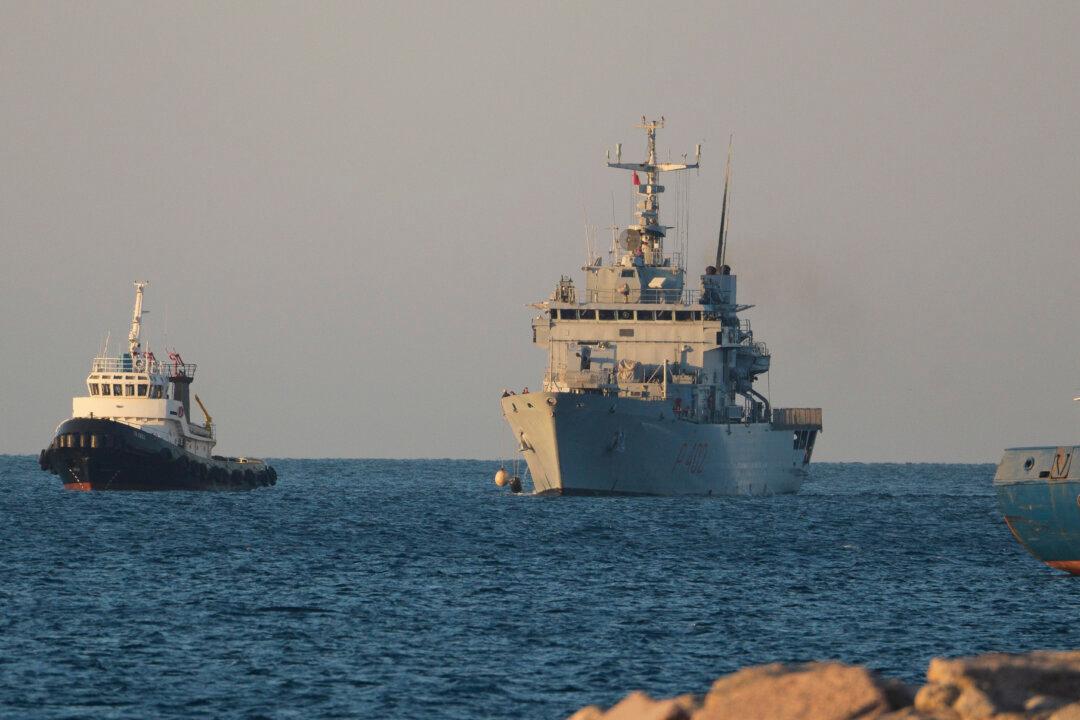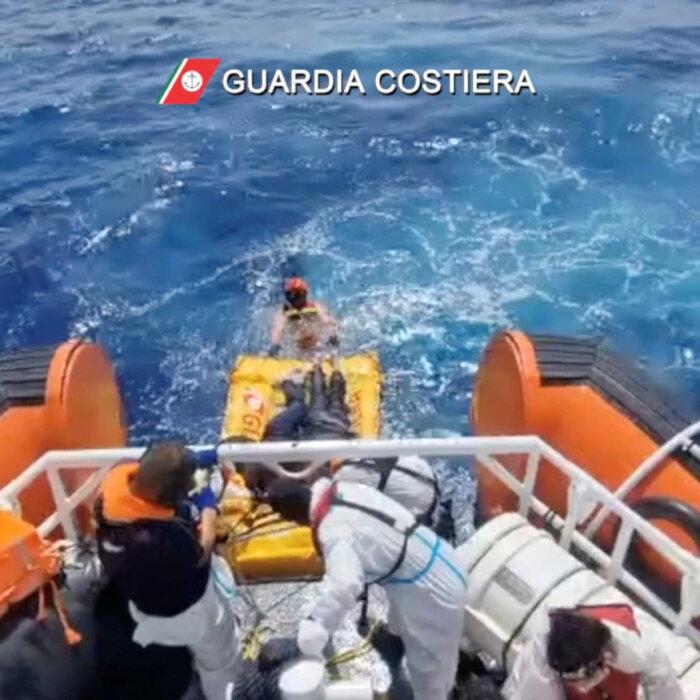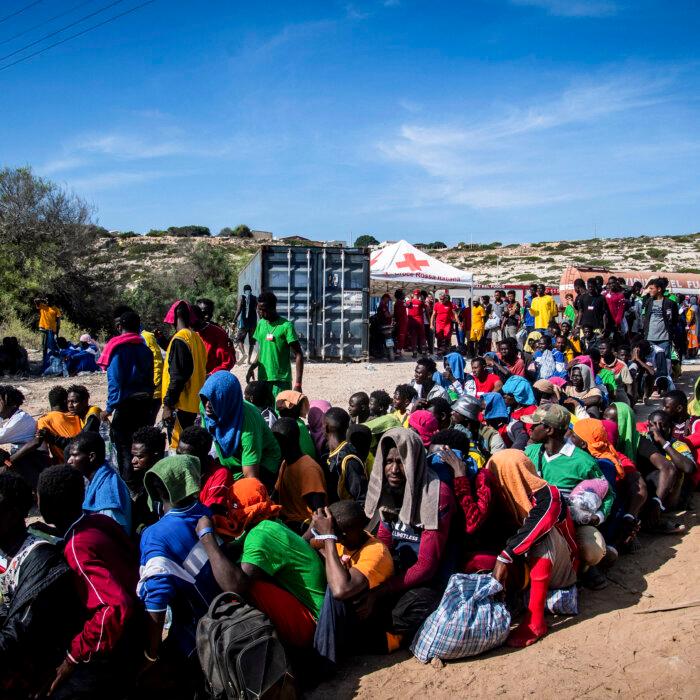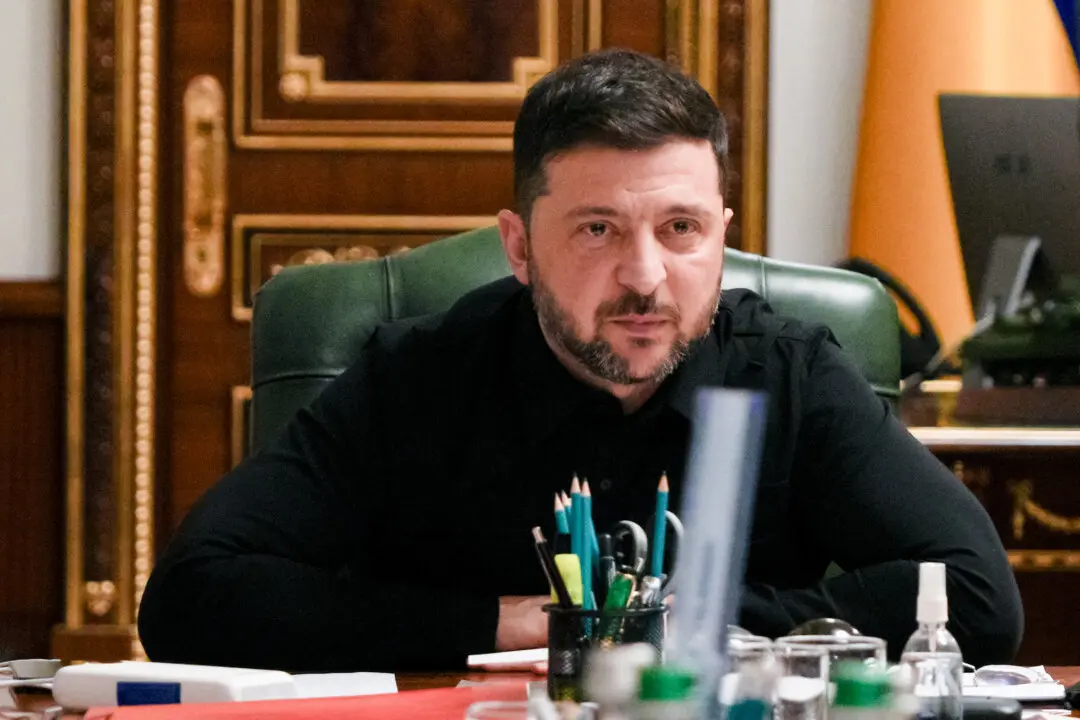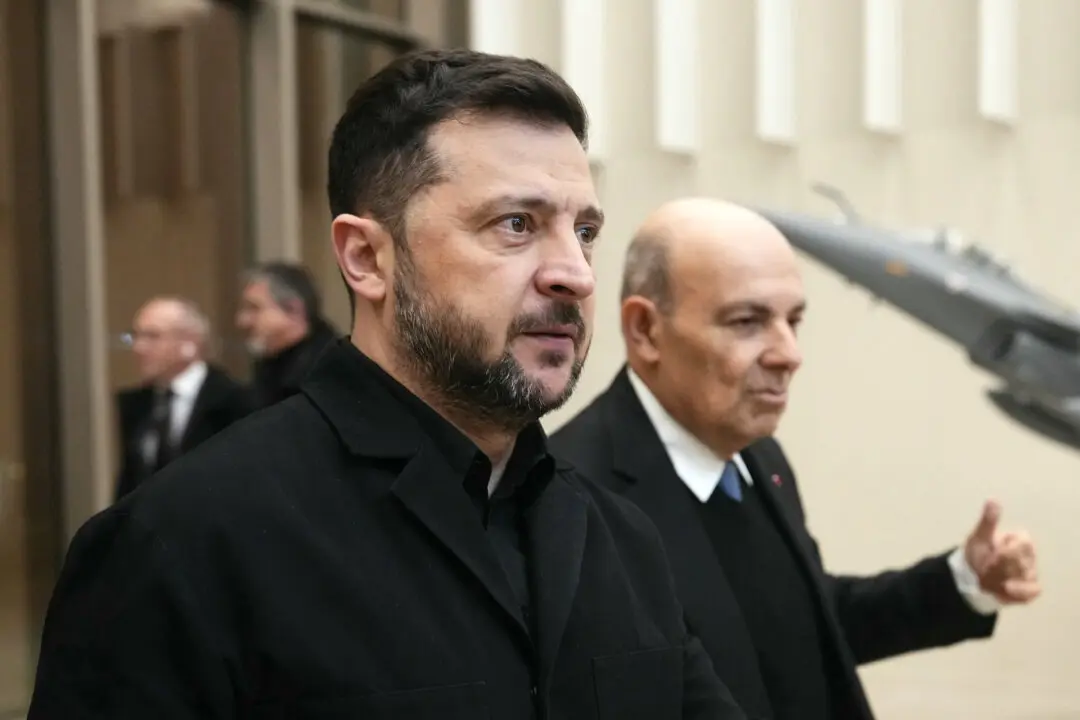An Italian navy ship carrying the first group of migrants to be processed in Albania arrived in the city of Shengjin on Wednesday.
Rome agreed to build two reception centers in the Balkan nation, which formally opened last week, in the first deal of its kind involving a European Union member state.
The ship, named Libra, docked at the former navy port Shengjin and was met by Italian officers.
The first group of 16 migrants to be processed under the new arrangement consists of, is made up 10 Bangladeshis and six Egyptians.
They were all picked up at sea on Sunday aboard boats that had set sail from the coast of Libya.
The migrants, all adult males, will be checked in Shengjin and then taken to Gjader, a small village about a 15-minute drive inland, where they will be held until their papers are processed, after which, they will be either sent to Italy if their asylum request is approved or deported back to their country of origin if rejected.
Italian staff will man the facilities, and Albanian guards will provide external security.
Under the arrangement between Italy and Albania, the total number of migrants at one time cannot exceed 3,000.
The deal was signed last November and will cost Italy 670 million euros ($730 million) over five years.
Though the center has a capacity for 3,000 migrants, it will begin with 400 and slowly scale up to 880 in a few weeks.
A maximum of 36,000 can be dispatched each year, so long as they have come from the list of countries classified as “safe.”
Italy has also said only “non-vulnerable” men coming from those countries will be housed in the centers.
“Vulnerable” migrants such as women, children, the elderly, and those who are ill or victims of torture will be accommodated in Italy, and families will not be separated under the scheme.
Currently, there are 21 “safe” nations on the Italian list. Last year, 56,588 migrants arrived in Italy from four of them: Bangladesh, Egypt, Ivory Coast, and Tunisia.
The majority of those soon fled the reception centers and made for other nations in northern Europe.
The government hopes the threat of detention will act as a deterrent for illegal immigrants.
Italian Prime Minister Giorgia Meloni said this week that Italy was setting an example for the rest of Europe with the policy.
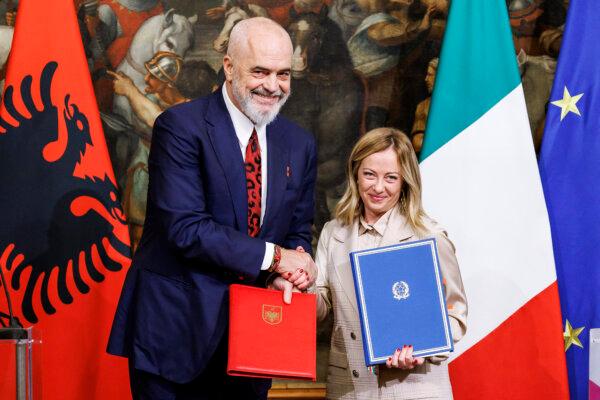
The agreement has been praised by some EU countries that are also suffering from vast numbers of illegal arrivals and was endorsed by European Commission President Ursula von der Leyen as an example of “out-of-box thinking.”
But it has been lambasted by some human rights groups as setting a dangerous precedent.
They say it could prove challenging for Italian courts to quickly process asylum requests or appeals against detention orders from people hosted in another country, which could lead to extended stays placing an “unjustified burden” on those seeking asylum.
Meloni has already presided over a huge reduction in the number of people entering Italy by crossing the central Mediterranean from North Africa.
According to the Italian Interior Ministry, as of Oct. 15, 54,129 illegal immigrants have arrived in Italy by sea this year, compared to 138,947 by the same date last year, a fall of 61 percent.
Adult males made up 74 percent of arrivals in Italy via sea during the first seven months of 2024, according to figures from the U.N. High Commissioner for Refugees.
However, any other countries hoping to come to a similar arrangement will have to look to nations other than Albania, with the nation’s Prime Minister Edi Rama making it clear the offer only extends to Italy.
He said the agreement was a sign of Albania’s gratitude for the tens of thousands of Albanians who were welcomed by Italy after the fall of communism in 1991, the support extended by Rome during the economic crisis of 1997, and Italian help in the aftermath of an earthquake in 2019.
